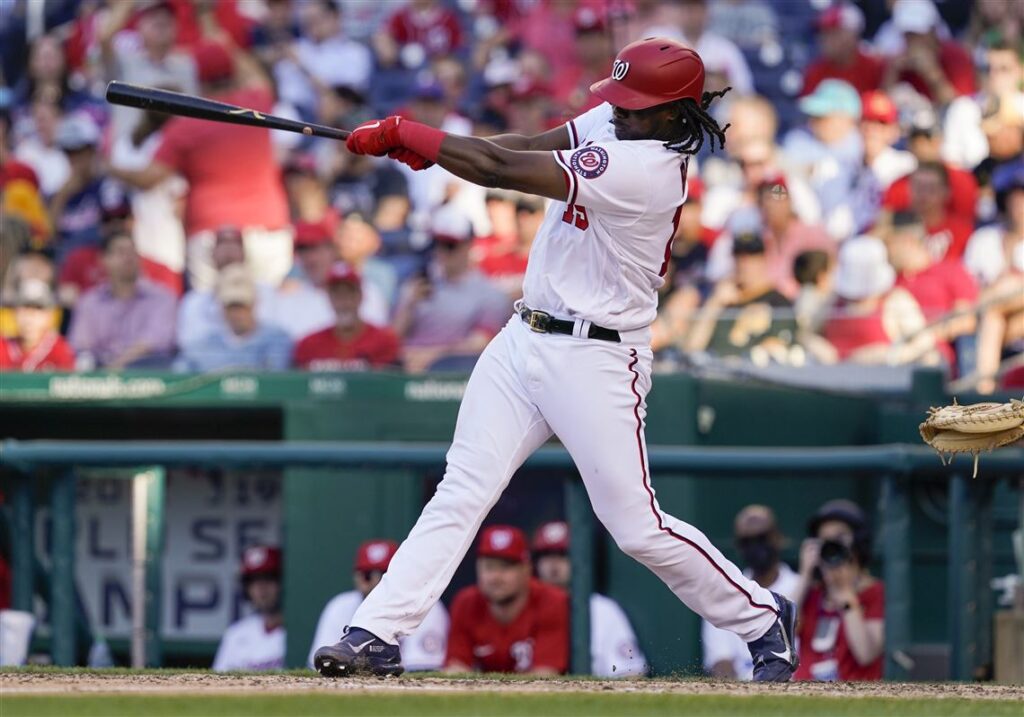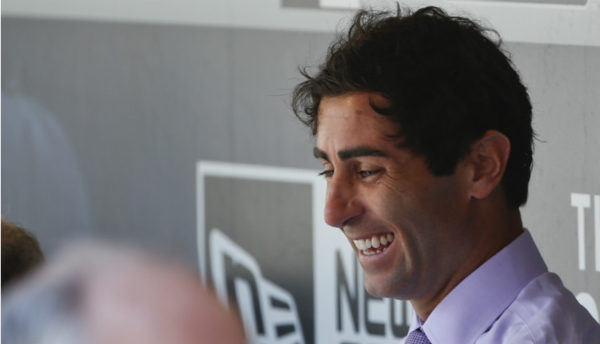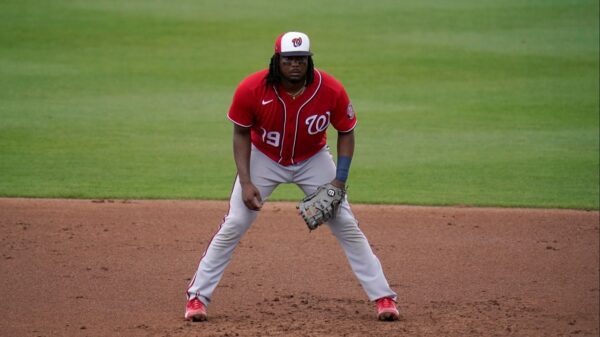Padres Trade Target: Josh Bell

Credit: USA Today Sports

The San Diego Padres enter the 2021 season with a first-base shakeup likely to occur.
General manager A.J. Preller has been shopping current first baseman Eric Hosmer for a few years now. With his recent stockpiling of catching depth and Hosmer gaining 10/5 rights to veto any trade next offseason, it appears more likely than ever that the trigger will be pulled on a deal. A possible deal sends Hosmer, most of his highly publicized contract, and top catching prospect Luis Campusano to another organization. With that move seemingly looming, the Padres could soon be in the market for a first baseman with strong offensive production that can boost their offense in 2022.
Often buried beneath more prominent names like Matt Olson and Nick Castellanos, Josh Bell isn’t usually among the top names Padre fans think of when it comes to upgrading what was a bottom 10 offense in slugging in 2021. A former top prospect, Bell has never quite lived up to the hype of that status due to his poor defense dragging his overall value down. In 2019, Bell had a phenomenal offensive season in which he hit .277/.367/.569/.936 with 37 home runs and 37 doubles but was only worth 2.4 fWAR and 2.8 bWAR. In 2021, Bell was not quite as good offensively, hitting .261/.347/.476/.823 with 27 home runs, 24 doubles, and a 1.4 fWAR, but posted a career-high 3.1 bWAR.
Why did this happen? Well, Josh Bell has long been an awful defender. From 2016 to 2020, Bell combined for -26 DRS and -22.8 UZR at first base. In 2016, 2019 and 2020, Bell posted -36.1, -16.4 and -22.0 UZR/150 respectively. So why trade for such an awful defender? Well, after becoming a Washington National in 2021, Bell dramatically cleaned up his defense at first base, putting up -1 DRS, -2.2 UZR, and -3.2 UZR/150 for career bests across the board. According to Statcast, Josh Bell recorded three outs above average (OAA) at first base in 2021, the same mark as former MVP first baseman Freddie Freeman. These defensive improvements have seemingly given Bell a boost in bWAR.
In late May 2021, Nationals manager Dave Martinez credited this defensive improvement to Bell’s extra work with bench coach Tim Bogar during Spring Training. So, there appears to be a tangible cause and effect between the improved defense instead of it just being coincidental. With such a high difference between his fWAR and bWAR, it’s reasonable to say Bell’s true value in 2021 lies somewhere in the middle.
Aside from his surface-level numbers, Bell brings plenty of very intriguing qualities as a hitter. Bell is a switch hitter that is very effective from both sides of the plate, posting an OPS over .800 from both sides in 2021. For a power bat, Bell is very good at limiting strikeouts and posted an impressive 17.8% strikeout rate along with an 11.4% walk rate in 2021. According to Statcast, Bell was in the 92nd percentile of average exit velocity, the 96th percentile of max exit velocity, and the 93rd percentile of hard-hit percentage among hitters in 2021. Bell’s 92.5 MPH average exit velocity and 52% hand hit percentage were both career highs for Bell, so in a way, Bell has rediscovered his offensive form from 2019.

So if Bell posted a higher average exit velocity and hard-hit percentage in 2021 than in 2019, why is there such a difference in power? The answer to that is a significant regression in Bell’s launch angle, which has led to dramatically increased ground ball rates in 2020 and 2021. In 2019, Bell had an average launch angle of 13 degrees, a 44.0% ground ball rate, and a 37.3% fly ball rate, but in 2021 Bell had an average launch angle of 4.9 degrees, a 53.5% ground ball rate, and 26.5% fly ball rate. While this may cause some to sour on Bell, let’s just think about this for a minute. Even with a flawed swing, Bell hit nearly 30 home runs and hit the ball harder than he ever has in 2021, including his 37 home run 2019 campaign.
Suppose the Padres were to trade for Bell and have him work with new hitting coach Michael Brdar, who comes from the launch angle fueled San Francisco Giants organization, to reclaim his launch angle from 2019. In that case, the Padres could potentially have the 2019 offensive version of Bell along with his improved defense. This version of Bell could provide the Padres with two to three fWAR and four to five bWAR in 2021, along with close to 40 home runs from both sides of the plate. Even if he doesn’t reach this level, Bell duplicating his 2021 performance would still make him one of the most productive hitters on the Padres.
[wpedon id=”49075″ align=”right”]
At his current value, Bell shouldn’t be too expensive, as there shouldn’t be much of a market for a one-year rental first baseman making nine to 10 million, and the Nationals would be eager to move that money off the books. As a rental, it would be easy for the Padres to move on from Bell in 2023 should things not work out.
With CJ Abrams projected to crack the big league roster by 2023, the Padres could slide Jake Cronenworth to first base should Abrams or Ha-Seong Kim earn the starting second base job. As for the prospect cost, former Padres’ second baseman Adam Fraizer, also a one-year rental, only cost the Mariners two unranked prospects in a trade earlier this offseason. Bell may take slightly more to pry away, but the deal would at most be a package of prospects headlined by a Padres prospect outside of the top 20 or just one prospect inside of the top 20. Comparatively, two years of top trade target Matt Olson will likely cost at least one of the Padres top four prospects and then some. Bell’s floor, ceiling, and affordability make him a great target for the Padres.
Born and raised in San Diego, aspiring Baseball Journalist and lifelong fan of the San Diego Padres. My life’s goal is to retire early, become a season ticket holder and practically live at Petco Park in the summer.